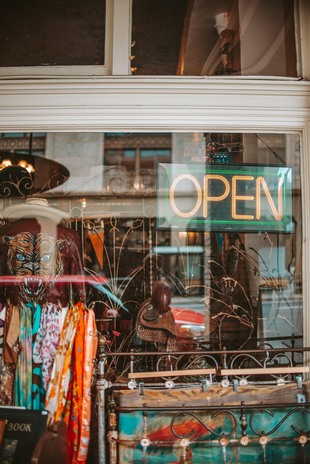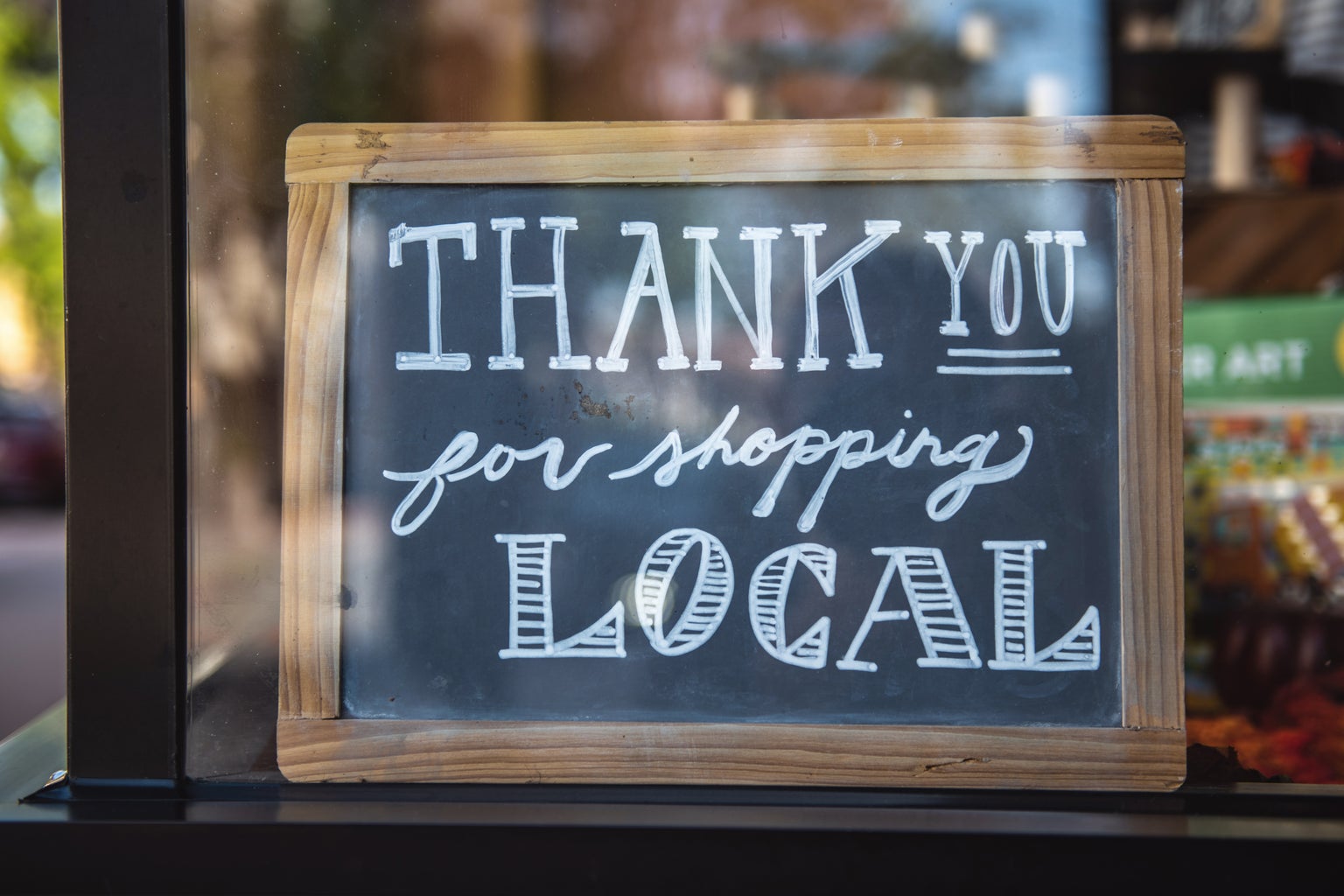Nestled in a small corner on the upper half of State Street between an Italian restaurant and a slightly overpriced consignment store lies Lewis and Clark, a female-owned small business specializing in trinkets, antiques, and small bits of joy. I stumbled upon the store one fabled weekend of my freshman year. I hopped off the 24x with a dream in my cardigan, grabbed a Dune vanilla iced latte, and stepped into the small brick-and-mortar shop.
My senses were pleasantly bombarded, my eyes overwhelmed by the shelves filled to the edge with collectibles, the “clink!” sound of bricks shifting beneath my feet. I was reminded of the infamous AMC Nicole Kidman commercial: we come to this place for magic.
Lewis and Clark was born from the minds of Elizabeth and Lisa Reifel, a mother-daughter duo from the Central Coast. Elizabeth always had a sense for design and aesthetics, and passed this keen eye onto her daughter Lisa who studied art history at UCSB. Elizabeth and Lisa decided to put their creative genius together in 1981 and opened the first rendition of Lewis and Clark in Victoria Court, a small business center just off State Street.
“Any small business owner will tell you the first few years are the hardest,” Meriwether Clarke, daughter of Lisa and granddaughter of Elizabeth said. Clarke runs Lewis and Clark’s day-to-day operations. She described how her mom had to wait tables in addition to working at the store in those first few years, but the store began to grow a small following. After a year in their Victoria Court location, Lewis and Clark were able to land a spot on State Street, where the current Santa Barbara Art Museum gift shop is located. They were in that location for 15 years before moving to their current location in La Arcada Plaza. The area, home now to Lewis and Clark and various other businesses, was in a state of disrepair when acquired by Hugh and Marjorie Petersen in 1972. They fixed up the plaza with the care and dedication of a mother, pouring love and whimsy into the process. Clark remembers Hugh, who passed away in 2003, as lovely and eccentric.
“A lot of the sort of interesting touches around La Arcada…those were all his calls,” Clarke said, referring to the eclectic collection of statues, benches, and signage that make up La Arcada. One of these is the window washer statue that stands outside of Lewis and Clark, perpetually cleaning their side window, as Clarke shared, “The window washer is such an iconic little statue in Santa Barbara.”
The charm of La Arcada perfectly reflects the store’s dreamy interior, equally quirky and pleasing to the eye. The products that Lewis and Clark carry possess almost poetic juxtaposing tones– each item is hand-picked and individual, yet cohesive. There are worldly undertones despite products being California mementos, and there’s a blend of vintage and contemporary items— it’s its own art form. Clarke described how her mom and grandmother crafted their approach to the store in the beginning.
“It was really important to both my mom and grandma to have items that represented a variety of cultural backgrounds,” Clarke said. She described how her mom and grandmother fell in love with folk art and emphasized this when choosing products from designers or sellers. This can be seen throughout the store, in the fabric products, keepsake boxes, and countless other trinkets. Another aspect that was important to the family when starting was accessible pricing.
“A 15-year-old who has a minimum wage job can come in and you know, buy a cute little seven-dollar bracelet for her mom,” Clarke said of the pricing. There are of course higher-priced items in the store, like vintage dish sets and jewelry, but their product supports a wide range of price points. It was important to them that the store was somewhere that anyone could shop. It was also important to provide a range of quality, unique items, Clarke confirming that, “pretty much everything we sell is chosen by hand.”
They acquire product through many different venues — the classic way being trade shows, where different creators market their products to be sold in stores. Another is through community contacts. Lewis and Clark have been in this business for over 42 years now, and because of this they have relationships with various designers who no longer attend trade shows and are able to acquire product through those means. This contributes to the individuality of the store’s merchandise. The last method adds to this as well, as Lisa has become a formidable antique dealer over the years, working with other Santa Barbara small businesses, attending estate sales, and occasionally buying items from friends, relatives, and store regulars.

Whether you’ve been in the store once or are an avid fan, patrons of Lewis and Clark always remember the terracotta brick flooring. Whether you admire the beautiful masonry or adore the ambient sounds of bricks tapping together, the bricks are a quintessential part of the shopping experience.
“You can’t work a day Lewis and Clark and not have at least one person try to talk to you about the bricks,” Clarke laughed. According to Clarke, Elizabeth and Lisa fell in love with the bricks in an antique store in England and it had always been a dream to have them in their own store. The sound was a delightful side effect of the flooring, but the bricks are an amazing retail floor, soaking up spilled drinks and enduring years of worn soles.
When asked about the various challenges of being a female-owned small business, Clarke handed it over to her mother, Lisa, who had been listening in and fact-checking Meriwether’s various answers during the interview. Lisa described how when the store first opened, most gift shops were owned by women. Despite this, the best trade shows (often run by men) were very restrictive to working mothers and parents.
“You were not allowed to bring your two-month-old breastfeeding baby, which meant that I couldn’t go to a trade show,” she recalled. At the time, trade shows were the primary method for procuring merchandise. Lisa assured that the gift industry has changed since then, and has become very welcoming to working parents and mothers. Owning the business as a family relieved Lisa from some of the other challenges encountered by small business owners.
“It would have been very hard to do with anyone other than my mom,” Lisa said of her mother, who has stepped back from Lewis and Clark’s day-to-day operations.
Lewis and Clark is a sparkling Santa Barbara gem, it’s a carefully beaded velveteen star, it’s a brass sacred heart keepsake, it’s a sterling silver tea strainer. It’s a reflection of all of the good, messy, parts of human nature. Or maybe it’s just a store. Lisa sums it up better than I ever could, “I want everyone to be able to enjoy pretty things.”



